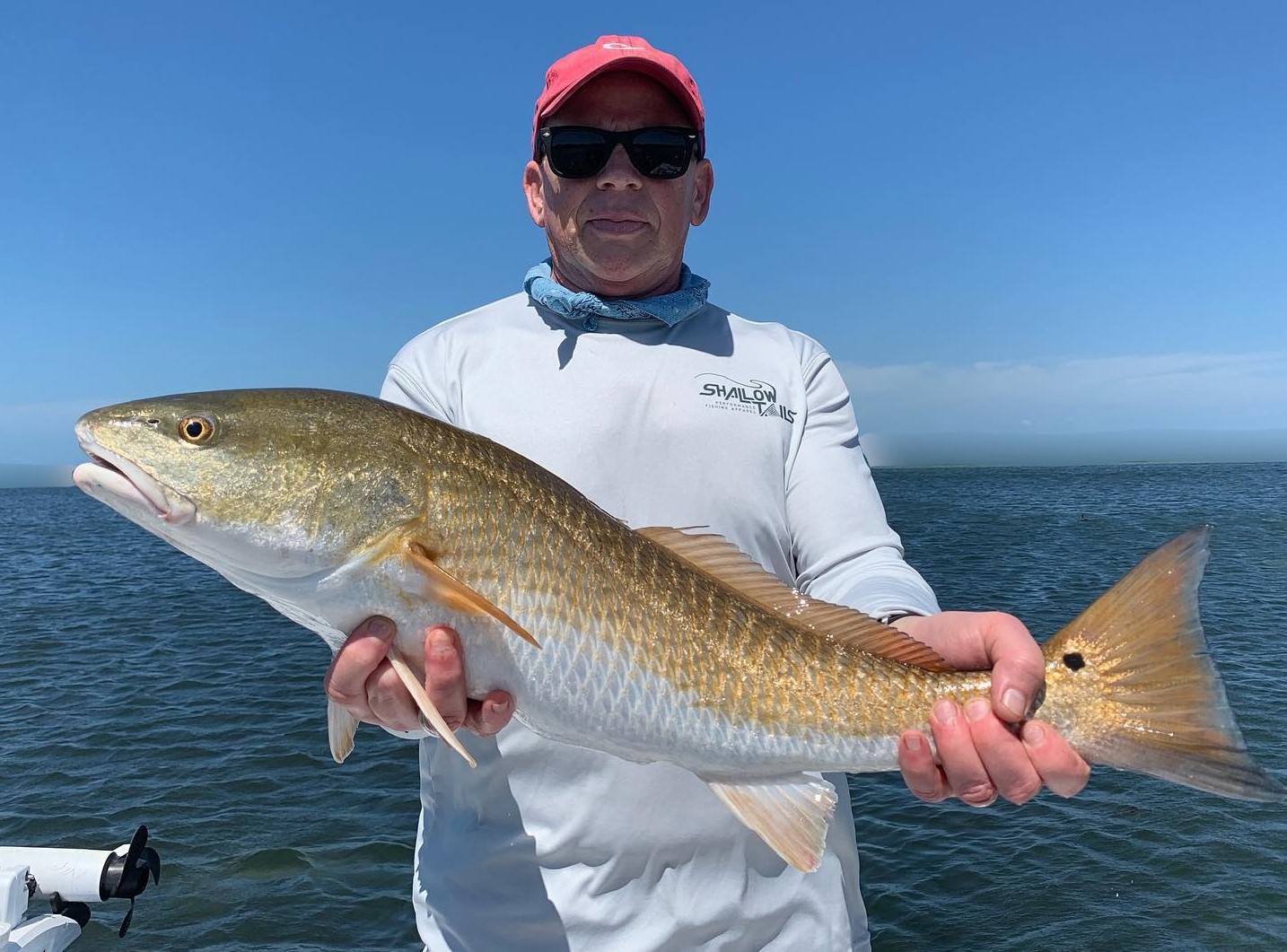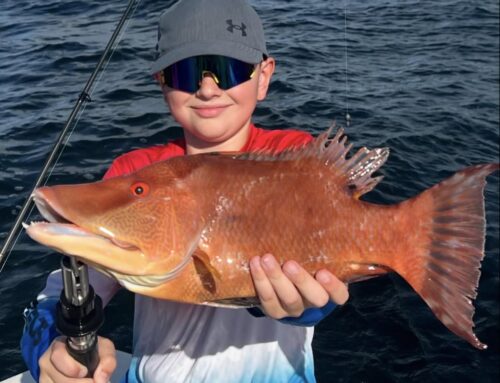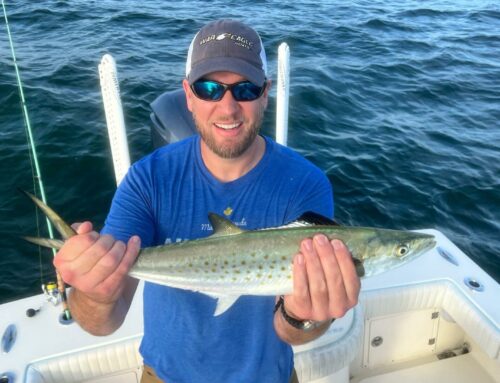Last Updated on May 2, 2025 by Writer
Summer brings a mix of heat, tides, and active inshore fish to the shallow waters around Anna Maria Island. For fishermen who understand how redfish behave in this season, it can also bring some of the most consistent and rewarding days on the water. The key is knowing where they go, how they feed, and what adjustments you need to make to fish successfully through long, hot days and shifting conditions.
Understanding Redfish on Florida’s West Coast
Redfish, also known as red drum, are a staple of inshore fishing along the Gulf Coast. Known for their copper coloring, black-spotted tails, and broad shoulders, redfish are built for shallow water. They’re tough fighters, bottom feeders, and present in large numbers throughout the estuary systems around Anna Maria Island.
What makes redfish unique is how well they adapt. These fish can tolerate brackish and even fresh water, they feed in skinny flats and deeper channels, and they’re comfortable rooting in grass beds, oyster bars, or around docks. That range means they’re available year-round, but their habits shift considerably from season to season.
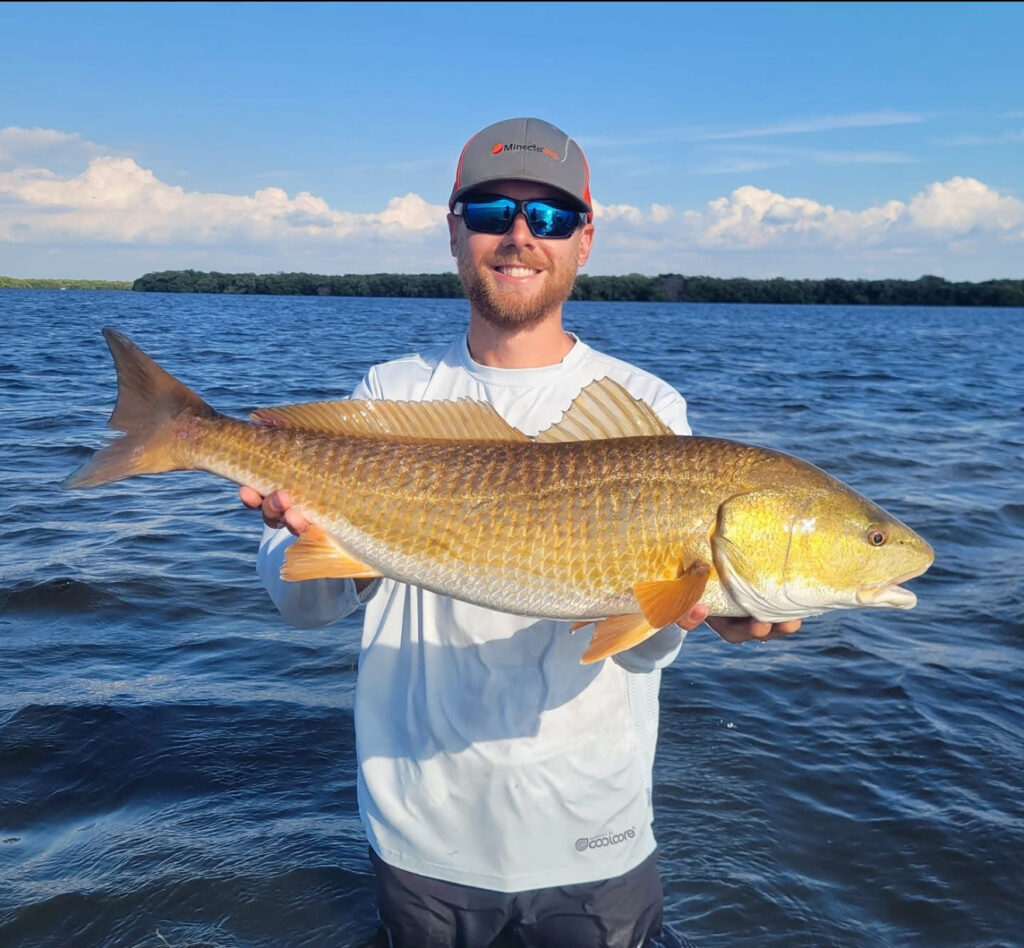
Summer Conditions Around Anna Maria Island
The months of June through early September bring high water temperatures, mid-day heat, and powerful afternoon thunderstorms. These factors shape redfish activity and change how fishermen need to approach their day.
-
Water Temperature: Surface temps in the bays and backwaters often climb into the high 80s. Redfish respond by feeding early and late and moving into cooler, oxygen-rich zones mid-day.
-
Tidal Flow: Summer tides are typically weaker than winter cold-front tides, especially in the morning. This slows bait movement and requires more precise placement of lures or bait.
-
Storm Patterns: Afternoon thunderstorms are common. Many experienced fishermen plan half-day trips that start early to take advantage of the calm, cooler morning hours.
In this environment, redfish do not disappear, but they do change their behavior. Knowing how and when to target them is what turns a summer trip into a productive one.
Where Redfish Go During the Summer
When temperatures spike, redfish seek comfort. That means access to deeper pockets of water, shaded structure, or current flow. There are a few key locations that consistently hold redfish in summer across Anna Maria Island’s inshore waters.
1. Early Morning Shallow Flats
Just after sunrise, you’ll often find redfish moving shallow to feed. These fish take advantage of lower light and cooler temps to hunt crabs, shrimp, and baitfish in skinny water.
Focus on:
-
Grass flats with potholes
-
Edges of oyster bars
-
Tidal creeks with soft drop-offs
This bite can be short-lived, often wrapping up by mid-morning, but it can also be the most visual and exciting. On calm days, redfish will tail or push water as they cruise, giving fishermen the chance to sight-cast.
2. Midday Structure and Current
As the sun rises, redfish retreat from the flats and settle around structure with shade and moving water. These fish are less aggressive but still catchable if you can get your bait in the right place.
Productive midday areas include:
-
Mangrove shorelines with overhangs
-
Deeper troughs running parallel to flats
-
Docks with 3 to 6 feet of water
The key is staying patient and fishing slow. Redfish here aren’t chasing bait across the flat, but they will inhale a properly presented offering.
3. Storm-Driven Feeding Windows
In the hour before a summer storm hits, redfish often become more active. Falling barometric pressure and cloud cover can trigger a noticeable uptick in feeding.
Keep an eye on:
-
Windward mangrove points
-
Mouths of creeks with tidal outflow
-
Shell bottom near islands or cuts
It’s risky to fish close to a storm, so safety always comes first. But if you’re back at the ramp before it rolls in, you might leave with a full cooler and a story worth telling.
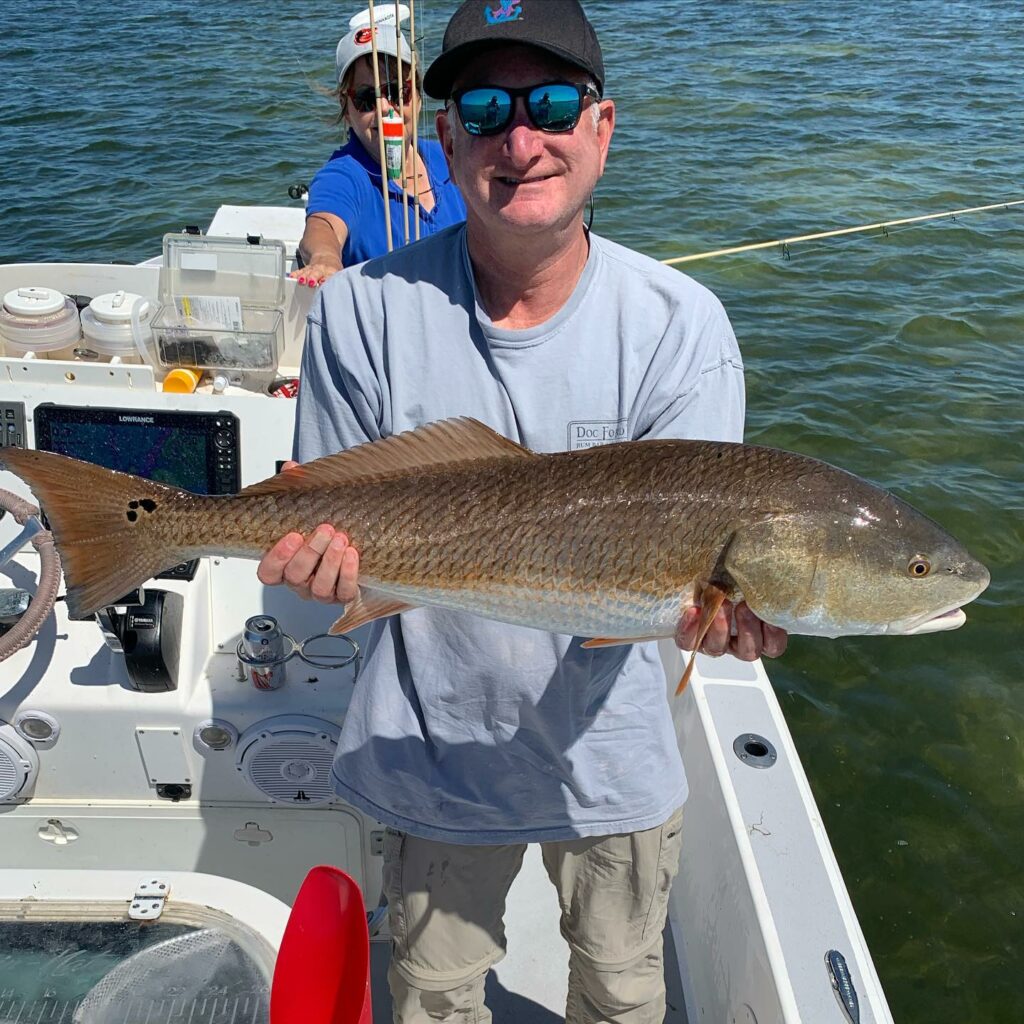
Seasonal Behavior and Feeding Patterns
Redfish feed all year, but in summer their priorities shift. Warm water speeds up their metabolism, yet it also makes them more selective in how and when they expend energy.
-
Early Summer: May and early June often bring post-spawn redfish into predictable schooling patterns. They’re hungry and aggressive, making this one of the best times for numbers.
-
Midsummer: As temperatures peak, redfish become more deliberate. You’ll still catch them, but finesse becomes more important than flash.
-
Late Summer: August into September can bring large breeder-sized fish into deeper inshore channels and passes. These oversized reds are less common but are often caught near the edge of the flats on big baits.
Their diet this time of year leans heavily on:
-
Small pinfish
-
Shrimp
-
Crabs
-
Mullet
-
Cut bait from ladyfish or threadfin
Matching what they’re already eating gives you the best odds of a bite.
Choosing Baits and Lures in Summer
Bait selection matters more in the heat. Some offerings spoil quickly, while others hold up better in warm, shallow water. Here’s what performs best in Anna Maria’s summer inshore fishery:
Natural Baits
-
Cut Mullet or Ladyfish: Great scent trail, stays put in current, ideal for bigger redfish.
-
Live Pinfish: Tough and durable, they attract strikes near docks or mangroves.
-
Shrimp (live or dead): More likely to draw bites from smaller redfish and bycatch, but still effective.
Keep bait cool and fresh in the heat. A small baitwell or bait bucket with aeration is essential on longer trips.
Artificial Lures
-
Topwater Plugs: Early morning walking baits can draw explosive surface strikes over the flats.
-
Soft Plastics: Paddle tails rigged weedless or on jigheads are versatile and effective. Stick with natural colors like root beer, silver, or white.
-
Scented Baits: Gulp! shrimp or jerk shads excel when fishing slow around structure.
During summer, you often need to slow your presentation down. Fish aren’t always willing to chase a fast-moving bait in hot, still water.
Gear and Presentation Tips
Redfish aren’t overly gear-shy, but summer conditions require a few practical adjustments:
-
Use fluorocarbon leaders (20–30 lb) to account for clear water and abrasion from oyster bars or mangrove roots.
-
Downsize your terminal tackle for finesse presentations, especially when targeting slot-sized reds.
-
Stay stealthy by poling or drifting into position rather than using a loud trolling motor.
You’ll also want a reliable pair of polarized sunglasses. Not only will they help you spot cruising fish on the flats, but they’ll also reduce eye strain on bright summer days.
Time Management and Safety
Summer fishing means early mornings, hydration, and weather awareness.
-
Start early. Be on the water at sunrise if possible. The first few hours often produce the most action.
-
Hydrate constantly. Summer sun and salt will wear you down fast. Bring more water than you think you need.
-
Watch the sky. Thunderstorms build quickly on Florida’s Gulf Coast. Set a hard stop time and don’t push your luck.
You can fish all day in summer if you want, but planning your trip around a 4–5 hour window in the morning is often more productive and far more comfortable.
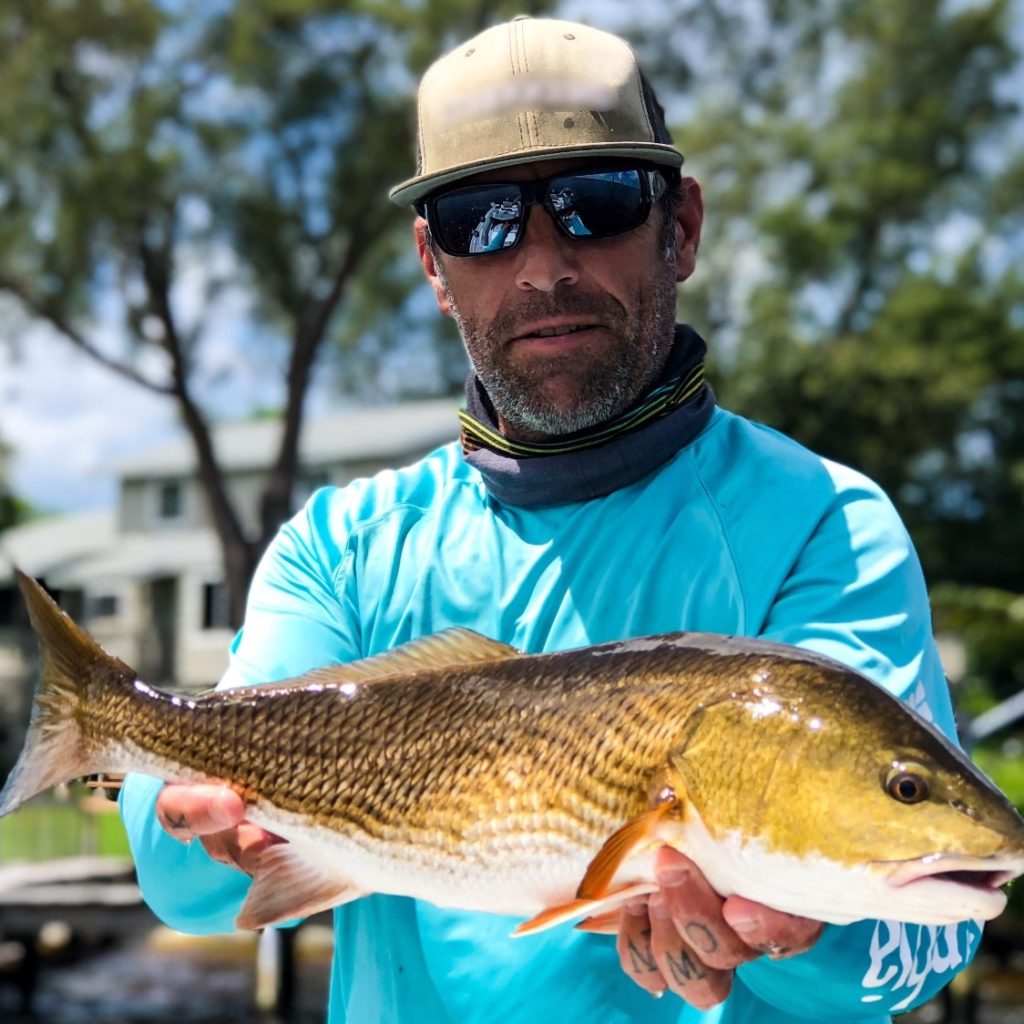
Slot Sizes and Legal Limits
For redfish in Florida’s Southwest Management Zone (which includes Anna Maria Island), regulations are always subject to change. As of now, the general rule is:
-
Slot size: 18 to 27 inches
-
Bag limit: 1 redfish per person per day
-
No captain or crew harvest on guided trips
Always check with FWC before your trip, as management zones and limits can shift based on stock assessments and environmental factors.
Why Summer Redfish Stand Out
Some fishermen overlook summer because of the heat. But those who put in the time know that the warm months can offer some of the most exciting inshore redfish action of the year.
-
Sight fishing opportunities increase with clearer water and calmer winds.
-
Schools of redfish are more predictable in early summer.
-
Feeding windows are narrow but intense, leading to action-packed sessions.
Success in the summer isn’t about grinding through the heat. It’s about timing, precision, and understanding the seasonal rhythms of the fish. If you adapt to those patterns, redfish will meet you halfway.
Summer Redfish the Way It Should Be
Summer inshore fishing on Anna Maria Island offers a clear advantage for those who understand the rhythm of the season. Redfish remain active and accessible, but their patterns demand more precision, more patience, and a deliberate approach to both timing and location. Early mornings, shaded structure, and tide-driven movement become the foundation of every productive trip.
These waters reward familiarity. Knowing when redfish push shallow, where they settle during peak heat, and how they respond to changing weather can make the difference between a slow day and a memorable one. Every season carries its own set of patterns, but summer favors those who prepare, adapt, and fish with intention.
If you’re ready to experience summer redfish fishing the right way, book a trip with us today. Captain Nate and the team are on the water daily and know how to turn the conditions in your favor. Let us show you what Anna Maria Island has to offer this season.

